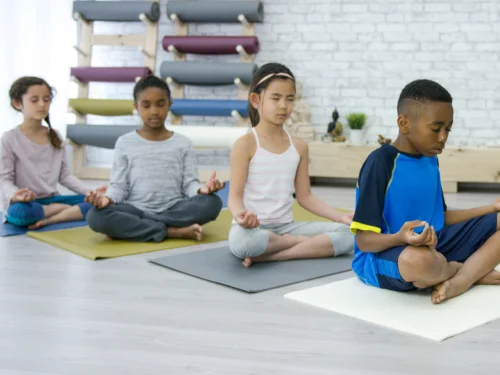5 Major Benefits of Hand-Eye Coordination: Why This Skill Matters More Than You Think

Yes—finger plays, clapping games, and dance routines that use hand gestures all help. Combine rhythm and repetition for deeper learning.
Send home simple activity ideas, kits, or worksheets. Offer short instructions and encourage family involvement. Regular practice builds lasting progress.
Try origami, sticker scenes, stringing pasta, or painting with Q-tips. Crafts that use small pieces build precision and control.
Hand-eye coordination might seem like a basic skill—but it plays a powerful role in how we move, learn, and connect with the world. From tying shoelaces to catching a ball or typing a message, hand-eye coordination is essential for success in daily life. Whether you're a child developing fine motor skills or an adult hoping to improve athletic performance, this complex brain-body interaction is worth paying attention to.
What Is Hand-Eye Coordination?

Hand-eye coordination is the ability of the visual system to process information and direct hand movement accordingly. It’s not just about vision or motor skills on their own—it's about how efficiently the brain, eyes, and hands communicate to respond to what we see. This coordination allows us to react quickly, move with precision, and complete tasks accurately.
5 Major Benefits of Good Hand-Eye Coordination
.webp)
1. Better Physical Performance in Sports
One of the most widely recognized benefits is in sports. Whether you're swinging a tennis racket, hitting a baseball, or dribbling a basketball, your ability to visually track objects and time your movements is crucial. Athletes with superior hand-eye coordination tend to have faster reaction times, better aim, and improved balance. These skills not only boost performance but reduce the risk of injury during play.
Did You Know? Sports like baseball, table tennis, and cricket are often used in studies to assess and train hand-eye coordination due to their high visual-motor demands.
2. Enhanced Academic Skills in Children
Surprisingly, hand-eye coordination also supports learning, especially in younger children. Activities that require coordination—like drawing shapes or copying from the board—reinforce spatial awareness, focus, and fine motor control. These, in turn, relate to skills in reading, math, and problem-solving. Children who develop this early may find classroom tasks less frustrating and more engaging.
Quick Tip: Encourage activities like tracing, building blocks, or wall coloring rolls to help children sharpen this ability while having fun.
3. Lower Risk of Injury
Coordination plays a vital role in maintaining balance and reacting to hazards. For older adults, poor coordination can lead to slower reactions, increasing the risk of falls and injury. Even younger individuals may struggle with clumsiness or delayed responses in daily situations like crossing the street or carrying objects. Good hand-eye coordination means your brain processes visual input faster, which helps your body move safely and accurately.
4. Improved Everyday Functioning
From typing and writing to cooking or using tools, daily life is full of tasks that rely on precise coordination. Hand-eye coordination ensures that your hands can follow your eyes quickly and correctly—whether you're unlocking a door or slicing vegetables. For people with jobs that involve manual labor, crafting, or frequent computer use, this skill can make work more efficient and less physically taxing.
5. Boosted Cognitive and Social Development in Children
Children use their hands and eyes together to explore the world, communicate, and build relationships. Joint attention—when a child and adult focus on the same object—helps develop language and social understanding. Games that involve hand movement, like stacking cups or playing catch, can also teach turn-taking, patience, and teamwork.
Bonus Insight: Studies have shown that coordinated interactions between parent and child, such as building something together or tossing a ball back and forth, may improve emotional bonding and communication skills.
What Happens When Hand-Eye Coordination Is Poor?
.webp)
When the brain and body don’t communicate smoothly, people may appear clumsy or uncoordinated. Tasks like writing, tying shoes, or driving may become frustrating or time-consuming. In children, poor coordination might affect handwriting, attention span, or participation in physical activities. In adults, it can impact job performance, independence, and even emotional well-being.
How to Improve Hand-Eye Coordination at Any Age
The good news? Hand-eye coordination can be improved through consistent practice and engaging activities. Here are some ideas:
For Children:
- Play catch or frisbee
- Use building blocks or shape sorters
- Try finger-tracing mazes or drawing games
- Use large wall coloring rolls for creative engagement
For Adults:
- Practice sports like tennis, ping pong, or archery
- Take up knitting, sketching, or video gaming
- Use apps or games designed to improve visual-motor skills
- Try low-impact exercises like yoga that emphasize body awareness
For Seniors:
- Engage in gentle tossing games or balloon volleyball
- Do light crafts or puzzles
- Consider vision therapy for structured improvement
You May Also Like: How to Stop Craving Sweets: Proven Strategies for a Healthier Lifestyle
The Brain-Body Connection Behind It All
.webp)
At the heart of hand-eye coordination lies the brain's ability to interpret what we see and translate that into action. This visual-motor link is tied to many other systems—like reaction time, depth perception, and spatial processing. That’s why improving this skill can ripple into so many areas of life, from better posture to quicker reflexes.
You May Also Like: How Often to Reapply Sunscreen: Expert Guidelines for Optimal Protection
Final Thoughts
.webp)
Hand-eye coordination is much more than a childhood milestone or an athlete’s secret weapon—it’s a foundational skill that shapes how we interact with the world. Supporting its development in children can give them an academic and social edge, while adults and seniors can benefit from exercises that sharpen reflexes and reduce everyday risks. With a little intentional practice, this skill can stay sharp at any stage of life.
You May Also Like: How to Tell If You Have Astigmatism: 5 Key Symptoms and Diagnostic Tips




